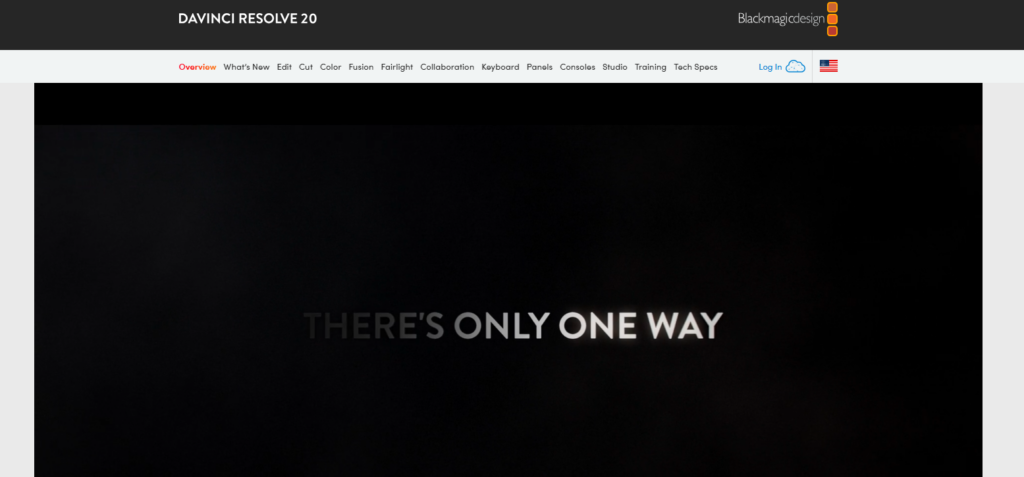

Creating video content on today’s date is not that difficult of a task. With powerful phones and cameras everywhere, content is popping up all over the place. But it’s editing that really makes a difference. That’s how a shaky clip turns into a story, and good creators stand out from the great ones.
If you’re curious about the top video editing software right now, you’re not the only one. There are tons of options out there. Some claim to offer movie-quality edits for free, while others are designed for mobile or loaded with AI features. So, which ones actually work for creators and pros?
This guide lays it all out. We looked into what filmmakers, YouTubers, content creators, and marketers actually use and why they like it.
What Makes a Video Editing Software Stand Out in 2025?
First things first, creators’ needs have changed a lot. What worked in 2020 just doesn’t cut it anymore. Whether you’re making a YouTube series, Instagram Reels, or a commercial for a client, you need tools that can keep up with today’s demands.
Here’s what sets the best software apart in 2025:
- Speed over features – No one wants a cluttered interface filled with tools they’ll never use. Editing is about being quick and clear.
- Cross-platform performance – Creators use different devices these days. Your tools need to work well on everything from laptops to phones.
- AI enhancements – Features like auto-generated captions, scene detection, and smart color correction are now standard, not just extras.
- Flexible exports – Want to make a video once and share it on TikTok, YouTube, Instagram, and LinkedIn? Your software should make that easy.
- Beginner-friendly UIs with room to grow – You want a tool that you can stick with, not one that you’ll outgrow too quickly.
The Quick Hit List (If You’re in a Hurry)
Before we go deep, here’s a snapshot of top contenders:
| Category | Software | Best For | Platform(s) |
| Professional | Adobe Premiere Pro | Filmmaking, agency content | Windows, Mac |
| Free and Powerful | DaVinci Resolve | Indie creators, budget pros | Win, Mac, Linux |
| Short-Form Creator | CapCut Desktop | TikTok, Reels, YouTube Shorts | Windows, Mac |
| Fast Social Editing | VN Video Editor | Mobile-first creators | iOS, Android |
| Apple Exclusive | Final Cut Pro | Speed, seamless Mac performance | Mac only |
| For Beginners | Moravi | Easy tutorials and interfaces | Windows, Mac |
| AI-Powered Future | Runway ML | Fast, browser-based, auto-edits | Web-based |
5 Best Video Editing Software of 2025
1. Adobe Premiere Pro

There’s a reason Adobe Premiere Pro is on the screens of many top editors, from documentary filmmakers to YouTube teams. It’s more than just an editing tool; it’s a complete system.
Even with the rise of AI editors and easy drag-and-drop apps by 2025, Premiere still remains the top choice for those who want total control over their projects.
So, why does Premiere Pro still win out in a changing industry?
1. It grows with you: Premiere Pro isn’t just for big feature films or flashy commercials, though it’s great for those too. It’s all about versatility. Whether you’re cutting a wedding video, editing a quick ad for Instagram, or working on a full-length documentary, it gets the job done.
- You can customize the interface to suit your needs, so it won’t force you into a specific way of working. This flexibility is why both independent creators and big studios stick with it.
2. Works smoothly together with Adobe’s Creative Suite: Premiere has a great perk that isn’t just about editing—it’s how well it works with Adobe’s other tools:
- If you need a cool animated title, you can make it in After Effects, and it’ll update automatically in Premiere.
- For those working on podcasts or video courses, you can fine-tune your audio with Adobe Audition, then go back to your video editing software, i.e. in Premiere.
- You can also bring in graphics from Photoshop or Illustrator and update them without messing up your timeline.
This smooth connection really helps save time and makes everything flow better in post-production.
Premiere Pro’s New Features for 2025
- Scene edit detection: This feature lets the software automatically find all the cuts in longer videos. It’s great for re-edits or breaking down content you’ve already made.
- Auto-ducking for music: Now, whenever someone talks, the background music automatically gets quieter. This saves a ton of time since you don’t have to adjust the levels manually anymore.
- Smarter proxy workflows: If you’re dealing with big 4K or 8K files, Adobe has made switching proxies faster and more dependable, especially when you’re using cloud storage or working remotely.
These updates won’t completely change how you use the software, but they make a lot of common editing tasks easier, which is a big help when you’re on a tight deadline.
When talking about ease of use for first timers,Premiere Pro isn’t the simplest video editing software to pick up. If you’re just getting started, the layout can seem a bit tricky. You’ve got layers, bins, timelines, effect panels, adjustment layers—it can be a lot to take in.
But that’s also why it sticks around. As you get better at editing, Premiere keeps offering new features. You won’t find yourself outgrowing it anytime soon. Plus, with loads of tutorials, templates, and a big community of users, you’ll always have help when you need it.
2. DaVinci Resolve

It’s pretty amazing that DaVinci Resolve is free, especially when you look at other software that can cost you hundreds of dollars every year. But this isn’t just a free video editing software; it’s a complete post-production studio all in one app.
In 2025, it’s really taken off and is a top choice for indie creators, teachers, and pros who want great results without spending a ton of money.
Why Is It More Than Just “Free Software”?
When folks hear free video editing software, they often picture basic tools with limited features or annoying watermarks.
But Resolve is different.
Made by Blackmagic Design, a company that specializes in professional cinema cameras and color grading equipment, Resolve is designed with the industry’s best practices in mind.
And the free version? It’s not just a marketing trick. You can use about 90% of the full toolset. That’s plenty to create anything from YouTube videos to feature films.
1. Advanced Color Grading
If you’ve ever wondered how movies get that nice, polished look, DaVinci Resolve is probably the tool behind it:
- It has all the features you need to change shadows, highlights, skin tones, and more, like color wheels, curves, and nodes.
- It works with HDR, RAW footage, and the latest camera tech.
- You can match shots, create your own LUTs, or add color effects with great control.
Even if you’re not planning to use these tools right now, they’ll be ready for you when you want to use them, and they’re some of the best out there.
2. Fusion
Most video editors just cut clips and throw in some transitions. But DaVinci Resolve does more with Fusion, which is a built-in VFX and motion graphics tool.
Fusion uses a node-based setup (imagine visual Lego blocks) that lets you create cool animations, special effects, green screen stuff, and title sequences.
- Want to make cinematic titles?
- Track text on moving objects?
- Add some particle effects or camera shake?
No need for another app—Fusion can do everything right in Resolve.
3. Fairlight
Audio can make or break a video, and Resolve doesn’t treat it as an afterthought. Enter Fairlight—a full-featured digital audio workstation (DAW) built directly into the software.
With Fairlight, you can:
- Mix multiple tracks with real-time control.
- Add EQ, compression, and noise reduction.
- Sync and balance dialogue, sound effects, and music.
- Use high-quality built-in effects and third-party audio plugins.
This is especially useful for creators producing podcasts, voiceovers, or narrative content where audio clarity matters as much as visuals.
3. CapCut Desktop

CapCut Desktop is here, and it’s more than just a TikTok editing app.
Originally made by ByteDance, the same folks behind TikTok, it was meant for quick video edits with fun effects.
But by 2025, CapCut has grown up and moved beyond just being available on phones. The desktop version has become a solid tool, especially for creators who want to make engaging short videos.
1. Quick and Easy Content Creation
In today’s fast-paced world, creators need to produce great content every day, and CapCut really shines here with its speed:
- With pre-made templates, you can whip up polished videos in just minutes, whether it’s for an Instagram ad, a YouTube Short, or a TikTok trend. Just add your footage, and you’ll have something that’s ready to go.
- The transitions, text animations, and video filters are super easy to use. You won’t have to struggle with complicated features to make your video stand out.
- For creators looking for an easy way to get good results, CapCut is the perfect tool that lets you focus on making content without any hassle.
2. AI Features That Are Actually Useful
CapCut has really embraced AI, making it handy for everyday creators:
- Auto-captioning: Just upload your video, and it quickly generates neat captions that fit your style. No need to type anything out, plus you can use custom fonts and styles.
- Background removal: Don’t have a green screen? No worries. This AI tool can cut out your background so you can add a fresh or branded one instead.
- Facial retouching and filters: These features are popular with influencers and teachers. They help you look polished without going overboard.
3. Easy and Trendy Sound Design
Music and sound effects are super important in short videos, and CapCut makes it really simple:
- It has a library of royalty-free music with tracks that suit every kind of video—whether it’s a cooking clip, a product showcase, or a funny skit.
- You can also find trending sounds and effects that get updated often, usually straight from TikTok.
- And the best part? You can auto-sync music to your edits, making even the simplest changes feel like they’re on point.
4. The Interface: Clean, Visual, and Easy to Use
CapCut Desktop has a nice, simple design. The layout is straightforward, the tools are easy to find, and everything works just like you’d expect:
- You can drag in clips, add transitions, tweak text, and export your video with just a few clicks.
- No need to sit through a long tutorial to get started.
- And don’t worry, it’s not too basic. You still get options for multi-track editing, keyframe animation, color changes, and speed adjustments, but it’s all easy to manage for beginners.
It’s made for creators who want to get things done quickly, not get lost in complicated settings.
4. Final Cut Pro

Final Cut Pro is a solid choice for video editing software, especially for Mac users.
It might not get as much attention as Adobe or DaVinci, but a lot of folks really appreciate its speed and reliability.
1. The magnetic timeline: One of the standout features is the magnetic timeline:
- It changes the game for editing by automatically snapping clips into place, which is way easier than the traditional method where you have to manually arrange everything.
- This is a big time saver, especially when you have a bunch of audio or B-roll to manage.
- New editors find this timeline pretty intuitive, and experienced users can cut down on editing time, which is great for projects that need to be done quickly.
2. M-series performance
Final Cut Pro is designed to work seamlessly with Macs, especially Apple’s processors.
- You’ll notice that exports are super quick. What takes 15 minutes in other software might only take 3 minutes in Final Cut.
- Plus, real-time previews run smoothly, even when you’re using heavy color grading, 4K clips, or a bunch of effects at once.
3. Adding Motion and Titles
If you’re looking to add animated titles, lower-thirds, transitions, or logo animations, Final Cut makes it super simple because it works really well with Apple Motion.
- You can create or download animated templates and use them right in your project.
- There’s no need to switch between apps or wait to render clips just to see how they look.
- For those who don’t have a design team or a background in motion graphics, this means you can get great visuals without the hassle of using After Effects.
5. Movavi

Not all video editing software is made for complex tasks or advanced features. Some are just for folks who want to jump into video-making without having to read a manual.
That’s where Movavi video editing software comes in.
It’s user-friendly and perfect for beginners. With more people getting into creating content these days—whether for fun, business, or school—this type of simplicity is super helpful.
One of the best things about Movavi is how it walks you through the process without making things confusing:
- Right when you open the app, you get an easy-to-follow guide that shows you how to cut clips, add music, and use transitions, all in straightforward terms.
- The design is neat and everything is easy to find.
- If you’ve used PowerPoint before, you’ll feel right at home with Movavi in no time. It really is that easy.
Movavi focuses on a simple visual process that helps you learn by seeing what works instead of just memorizing tools.
- Want to insert a transition between your clips? Just drag and drop it. Easy as that.
- Need a title on your scene? Just click, type, style it, and position it. No complicated keyframes or coding.
- Looking to tweak audio, colors, or add filters? Just use the sliders and checkboxes—no tech skills needed.
Even though Movavi keeps things simple, it doesn’t skimp on features that matter to new creators.
- Green screen (chroma key) lets you experiment with creative backgrounds and overlays.
- Text overlays, transitions, and filters give your video polish without effort.
- Picture-in-picture support, audio editing, and timeline-based trimming allow for multi-layered edits, even if you’ve never worked with video before.
Final Thoughts: Picking the Right Tool for You
In 2025, there isn’t a single right answer for video editing software—and that’s actually a good thing.
The best tool isn’t always the one with the most features or a big name. It’s about what works for you, your skills, and the type of content you want to make:
- If you’re diving into professional video and want to keep your skills up-to-date, Adobe Premiere Pro is still a solid choice.
- If you want quality without spending money, DaVinci Resolve offers great tools for free.
- For those creating quick, social media content, CapCut Desktop is easy to use but surprisingly powerful for short videos.
- Mac users will find that Final Cut Pro is perfect if they care more about speed and a simple design, rather than having a lot of extra features.
- If you’re just starting and want something easy to use, Movavi is a good option to help you gain confidence without any hassle.
At the end of the day, the video editing software you choose is just one part of the puzzle. How you use it and how often you create is what really makes a difference. So don’t worry too much about finding the “perfect” software right away. Just pick one that helps you get started.
The post Top 5 Video Editing Software Creators and Experts Use (2025) appeared first on AAET.





